11 Essential Tips For Raising A Well-Behaved Cat (And 4 Things That Could Make Them Misbehave)

Cats might seem like independent creatures who do whatever they please, but they actually respond well to proper training and care. A well-behaved cat makes for a happier home and a stronger bond between you and your feline friend.
Whether you’re bringing home a new kitten or trying to improve your adult cat’s behavior, these essential tips will help you raise a cat that’s a joy to live with – and help you avoid the common mistakes that lead to feline mischief.
1. Start Training Early

Kittens are like little sponges, soaking up lessons that will shape their adult behavior. Beginning training between 2-7 weeks of age makes the biggest impact, as this critical socialization period sets the foundation for how they’ll interact with humans, other animals, and their environment.
Focus on gentle handling, introducing various sounds and experiences, and basic boundaries. Even five minutes of daily training can dramatically improve your kitten’s future behavior.
Adult cats can absolutely learn new behaviors, too, but they might need more patience and consistency as you work to reshape established habits.
2. Consistent Scratching Posts
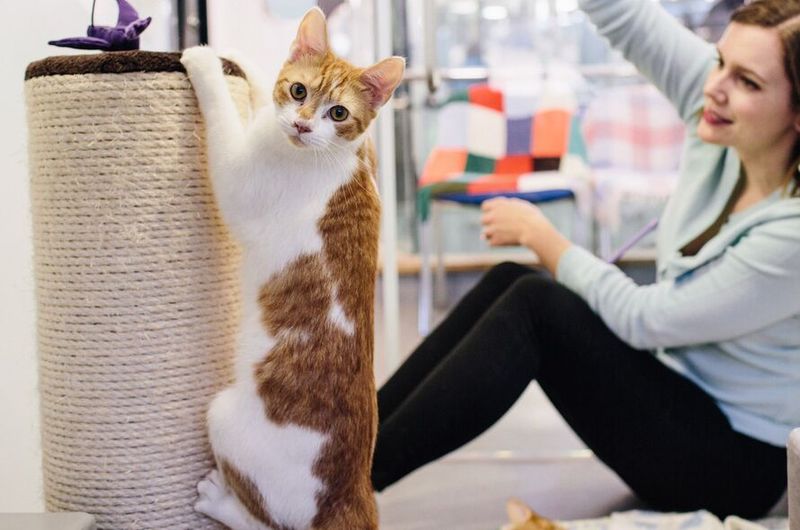
Scratching isn’t naughty behavior – it’s a natural feline need that helps cats stretch muscles, shed dead nail sheaths, and mark territory. Smart cat parents provide multiple scratching options throughout their home, including both vertical and horizontal surfaces with different textures.
Position these posts near furniture that your cat already shows interest in scratching. When you catch your kitty using approved scratching spots, reward them immediately with praise or treats.
For maximum appeal, choose sturdy posts tall enough for a full stretch – at least 3 feet high for adult cats.
3. Regular Playtime Schedule
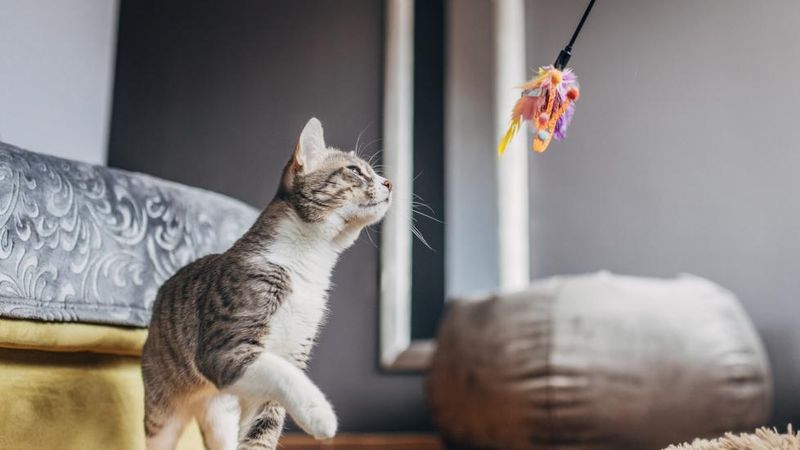
Bored cats become troublemakers! Daily play sessions channel your cat’s natural hunting instincts in a positive way, preventing destructive behaviors born from excess energy. Morning and evening play sessions of 10-15 minutes each work wonders for most cats.
Rotate toys to keep things interesting – feather wands, crinkle balls, and puzzle feeders all engage different hunting behaviors. The type of play matters, too. Some cats prefer aerial hunting with wand toys, while others enjoy pouncing on floor toys.
Watch for the tell-tale back wiggle before they pounce – that’s pure feline joy!
4. Proper Litter Box Management
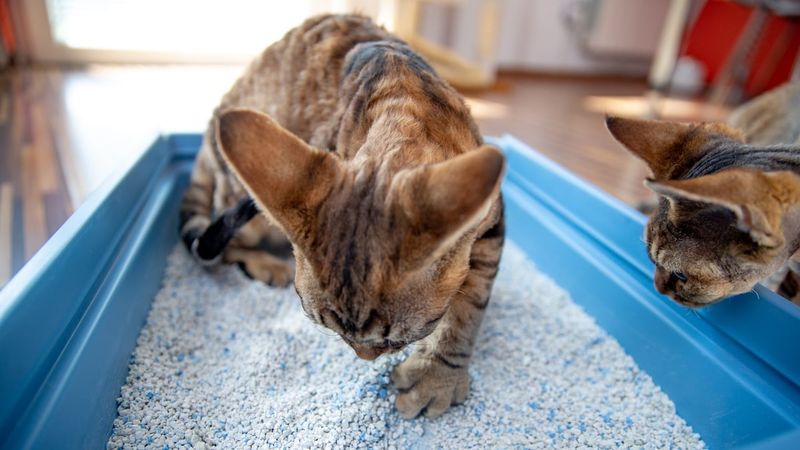
The golden rule of cat bathrooms: one more litter box than the number of cats in your home. A single cat needs two boxes, two cats need three, and so on. This prevents territorial issues and ensures your cat always has a clean option available.
Location matters tremendously. Boxes should be in quiet, accessible spots away from food areas and noisy appliances. Most cats prefer unscented, clumping litter with a sandy texture.
Scoop daily and completely change litter weekly. Surprise fact: many cats refuse covered boxes because they trap odors inside – what seems cleaner to us feels trapped to them!
5. Reward Good Behavior
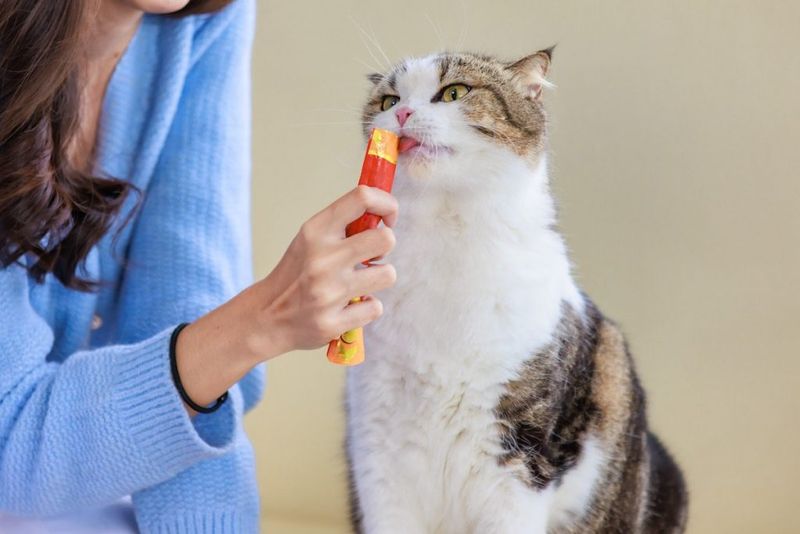
Cats respond beautifully to positive reinforcement! When your feline friend uses the scratching post instead of your couch or comes when called, immediately reward them with something they value – treats, pets, or play. The key word is immediately – cats connect rewards with actions happening right now, not five minutes ago.
Special treats reserved only for training reinforce the connection between good behavior and rewards. Some cats go crazy for freeze-dried chicken, while others prefer a special toy.
Clicker training works wonderfully for cats, too, creating a clear signal that marks the exact moment they’ve done something right.
6. Create Vertical Space
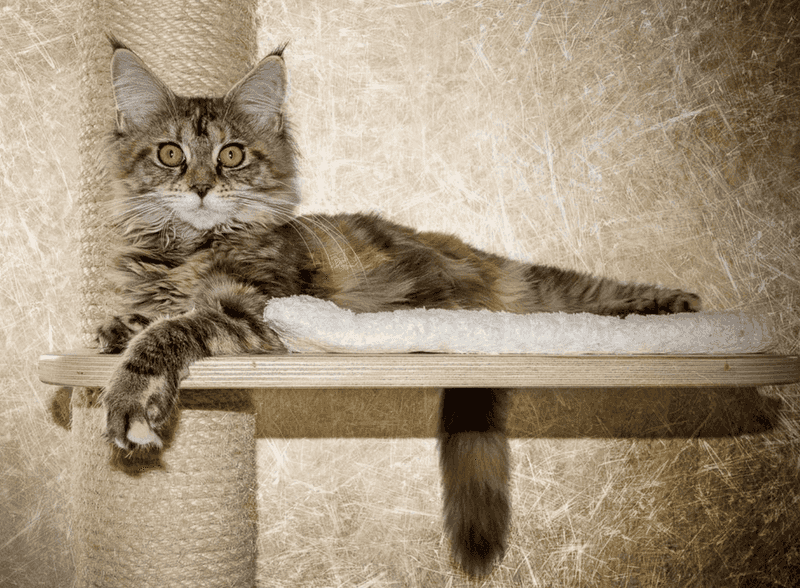
Cats naturally seek high perches where they can survey their territory and feel secure. Cat trees, wall shelves, and window perches satisfy this instinct while preventing problematic climbing on furniture or counters. These vertical spaces become safety zones where your cat can retreat when feeling overwhelmed.
Strategic placement makes all the difference. Position climbing structures near windows for entertainment value or in quiet corners for peaceful napping spots.
Vertical spaces also solve multi-cat household tensions by creating a three-dimensional environment where cats can establish territories without conflict. More square footage without taking up floor space – what’s not to love?
7. Establish Feeding Routines

Predictable mealtimes create security for your cat and prevent food-related behavior problems like begging or counter surfing. Most adult cats thrive on two measured meals daily rather than free-feeding, which can lead to obesity and food guarding.
Make mealtimes engaging by using puzzle feeders or food-dispensing toys that satisfy hunting instincts. These tools slow down fast eaters and provide mental stimulation.
For multi-cat households, separate feeding stations prevent resource guarding and ensure each cat gets their proper portion. Remember that sudden hunger or excessive begging might signal health issues requiring veterinary attention – cats are masters at hiding illness!
8. Provide Appropriate Chew Toys
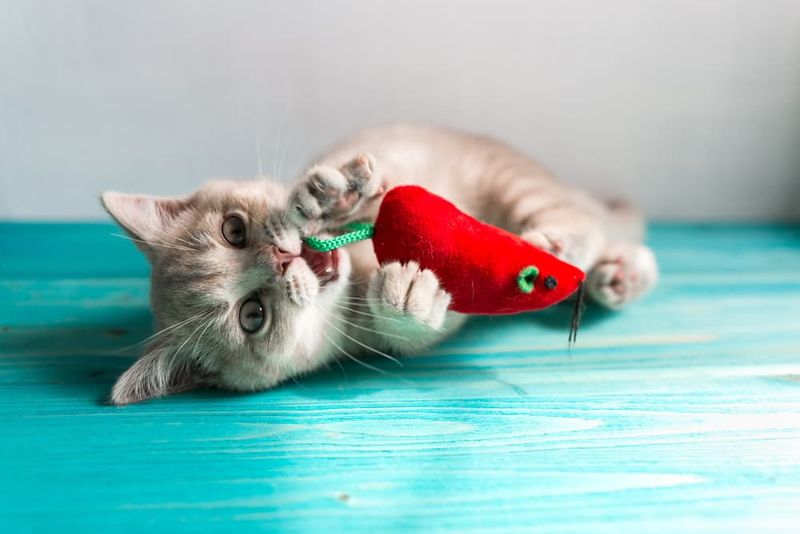
Many cat parents don’t realize their feline friends need appropriate items to chew on, just like dogs do! Dental health toys, cat grass, and specially designed cat chews satisfy this natural urge while protecting your houseplants and cords from becoming substitute chew toys.
Silver vine sticks offer a fantastic alternative to catnip for many cats, with a woody texture perfect for gnawing. Rotate chew options regularly to maintain interest.
Monitor chewing habits closely – sudden increased chewing might indicate dental pain or gum disease requiring veterinary care. Healthy cats typically enjoy occasional recreational chewing rather than obsessive gnawing.
9. Socialize With Humans And Other Animals

Well-socialized cats adapt easily to new situations, visitors, and other pets. Early exposure to gentle handling by different people helps kittens develop confidence around humans. Introduce your cat to visitors calmly, allowing them to approach on their own terms.
For older cats with socialization gaps, patience works wonders. Let fearful cats observe social interactions from safe distances before expecting participation.
When introducing cats to other pets, use scent-swapping techniques first, followed by short, supervised visual introductions. The process might take weeks, but proper socialization prevents stress-related behavior problems and creates a more adaptable, confident companion who enjoys an enriched social life.
10. Regular Health Check-ups

Many behavior problems stem from hidden health issues! Cats instinctively hide pain, so that sudden aggression or litter box avoidance might actually signal medical problems. Annual veterinary visits catch problems early, while establishing a baseline for your cat’s normal behavior and health.
Between check-ups, monitor for subtle changes like altered grooming habits, different vocalization patterns, or changes in activity level. These can be early warning signs of discomfort.
Consider working with veterinarians who practice fear-free techniques. These approaches reduce stress during visits, making future care easier and preventing medical-visit anxiety that affects behavior at home.
11. Environmental Enrichment
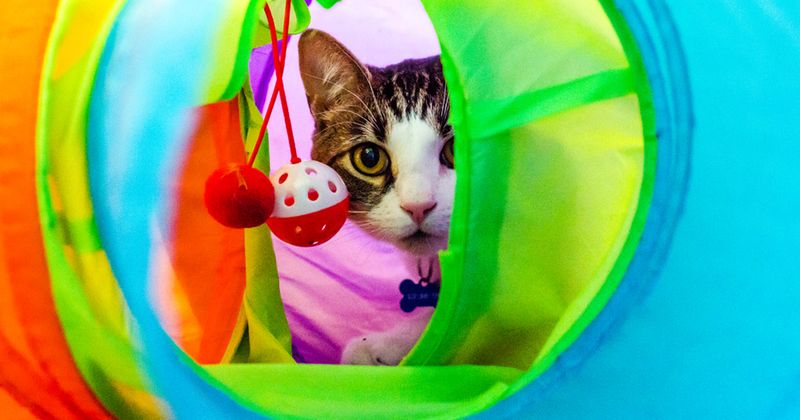
Indoor cats need mentally stimulating environments that satisfy their natural instincts for hunting, exploring, and problem-solving. Rotate toys weekly to maintain novelty, and consider food puzzles that make mealtime an engaging challenge rather than a simple consumption activity.
Window perches with bird feeders visible outside create “cat TV” – hours of stimulating entertainment. Sensory enrichment matters too! Many cats enjoy exploring cardboard boxes, paper bags (with handles removed), or crinkly tunnels.
Even scent enrichment helps – try growing cat-safe herbs like wheat grass or catnip indoors. A stimulated cat’s mind has less energy for destructive behaviors.
12. AVOID: Punishment-Based Training

Squirt bottles, loud noises, and physical corrections don’t teach cats what TO do – they only create fear and damage your relationship. Cats don’t connect punishment with their actions; they associate it with YOU becoming unpredictable and scary.
Instead of punishing unwanted behaviors, redirect to appropriate alternatives. Cat jumping on counters? Create appealing alternative perches nearby. Scratching furniture? Guide paws to proper scratching posts.
Cats respond to what works for THEM, not what makes sense to humans. Rather than thinking “my cat knows better,” remember they’re following natural instincts, not deliberately misbehaving to upset you.
13. AVOID: Inconsistent Boundaries
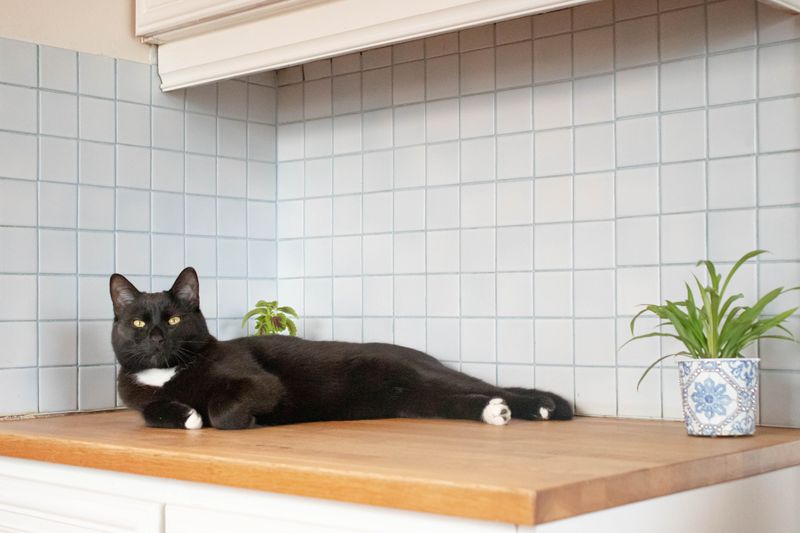
Cats thrive on predictability! Allowing your kitty on the counter sometimes but scolding them other times creates confusion and anxiety. They can’t understand situational exceptions – only consistent patterns.
Establish clear, unchanging rules from day one. If the bedroom is off-limits, it should always be off-limits. If certain furniture is cat-free, maintain that boundary consistently.
Everyone in the household must enforce the same rules. When boundaries shift randomly, cats become stressed and may act out through inappropriate elimination, excessive grooming, or aggression. Consistency isn’t just about behavior – it’s about creating security and trust in your cat’s world.
14. AVOID: Ignoring Hiding Behavior
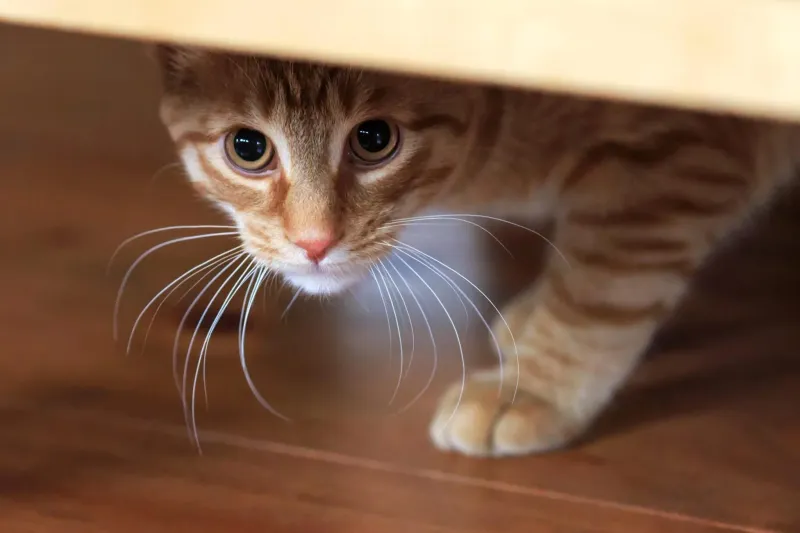
A cat who suddenly starts hiding requires immediate attention! This major behavior change often signals illness, pain, or extreme stress. While occasional hiding during thunderstorms or visits from strangers is normal, persistent hiding warrants investigation.
Check for environmental changes first – new pets, moved furniture, unfamiliar scents, or loud noises. If you can’t identify an obvious trigger, schedule a veterinary visit to rule out medical causes.
Never force a hiding cat out of their safe space. Instead, create quiet opportunities for positive interaction on their terms. Patience and gentle encouragement help rebuild confidence, while forced interaction only deepens fear and mistrust.
15. AVOID: Overlooking Litter Box Preferences
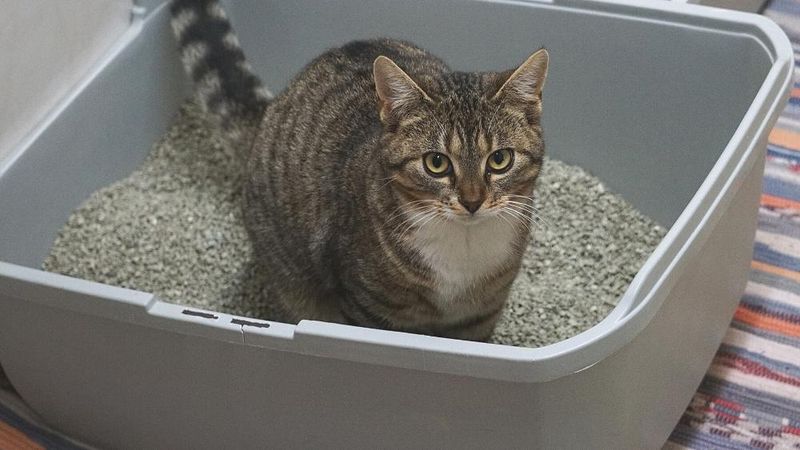
Cats have strong opinions about their bathrooms! Ignoring these preferences often leads to the number one behavior complaint: inappropriate elimination. Most cats dislike scented litter, covered boxes, and liners that catch their claws uncomfortably.
Box size matters tremendously – the box should be 1.5 times your cat’s length for comfortable movement. Depth preferences vary too; some cats prefer shallow boxes while others need high sides for privacy.
Location is equally important. Litter boxes should never be near food areas, noisy appliances, or high-traffic zones. The perfect spot offers privacy but remains easily accessible, allowing your cat to see approaching people or other pets.






